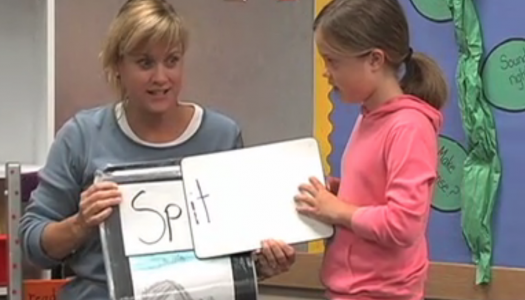Onsets and Rimes
Join Our Community
Access this resource now. Get up to three resources every month for free.
Choose from thousands of articles, lessons, guides, videos, and printables.
.jpg)
Researchers Wyle and Durrell (1970) found that if students know the following rimes, they will know 500 early reading words. Many of us know onsets and rimes by a synonymous name; word families.
To be clear, an onset comes before the vowel while the rime is the rest of the word, for example in the word dog, the 'd' is the onset and 'og' is the rime. We use onsets and rimes when working with individual students or small groups that are working on Accuracy, with the strategy of Chunk letters and sounds together. One of our favorite ways to teach and reinforce this strategy is with a white board, and an activity we call "Quick Erase".
Here is how we teach this lesson.
- Write the rime 'og' on the board and introduce the rime to the child and then say, "If you know 'og', then you will know (write an "l" in front of "og") 'log'.
- We then erase the 'l' and say, "If you know 'log' then you will know (write an "f") 'fog'.
- We continue with 4-5 words.
- Once students have been introduced to this quick format, we use Quick Erase each time we meet with a student learning how to chunk letters and sounds together. We add the list of onsets and rimes below to our conferring notebook, so we can refer to them with ease.
Onsets and Rimes:
ack, at, ide, ock, ain, ate, ight, oke, ake, aw, ill, op, ale, ay, in, ore, all, eat, ine, ot, ame, ell,, ing, uck, ,an, est, ink, up, ank ice, ip, ump, ap, ick, it, unk, ash
Reference
Whylie, R.E. & Durrell, D.D. (1970). Teaching vowels through phonograms. Language Arts 47.6: 787-791.






